Like other travelers, I selected Tucson for its geographical location. I wanted to embrace a dude ranch experience, and also sip margaritas while munching on southwestern guacamole as the sky became a canvas at sunset. I was looking for a laid back vacation that weaved together the accoutrements of a desert environment while simultaneously enjoying Mother Nature’s handiwork. If you don’t enjoy riding horseback through the arid desert, then skip the dude ranch and settle instead for one of Tucson’s full service resorts or city hotels.
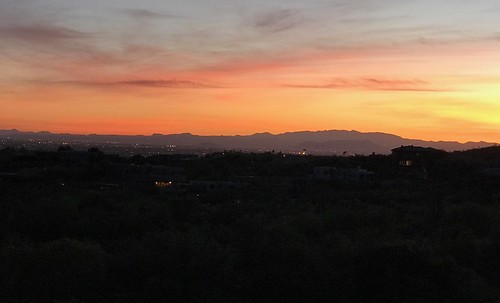
Arizona Desert Sunset
What I experienced in Tucson was more enriching than I had anticipated. While foodies may have read that Tucson was the first city in the United States to be recognized as a UNESCO World City of Gastronomy, I was totally unaware of this designation. From Don Guerra’s centuries-old baking techniques at Barrio Bread to a chef’s table culinary feast at Tanque Verde Ranch, I indulged. It’s hard to leave Tucson hungry.
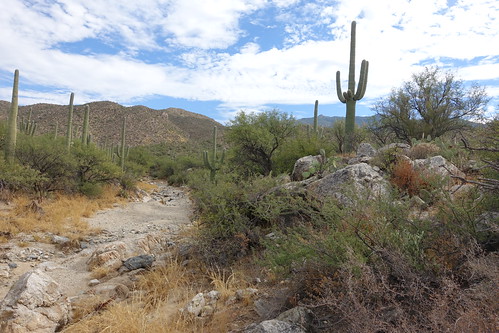
Arizona Desert Terrain at Dude Ranch
Initially, my visits to a handful of museums were a low priority. However, my experience exceeded my expectations. The places that I’m mentioning in this story made history come alive. If you’re a life-long learner who wants to know more about aviation, antique cars, and southwestern history, Tucson is an excellent place to start.
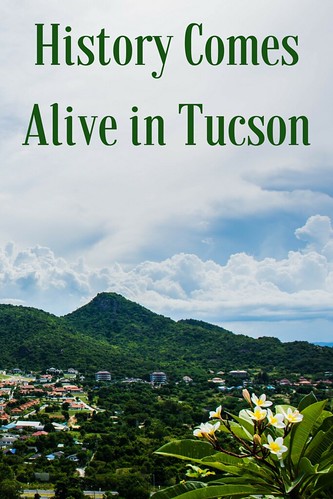
Pima Air and Space Museum
In retrospect, I wish that my itinerary had included more time at this remarkable aviation and space museum. Since I’m fascinated by the history of flight, I could have easily spent the whole day exploring the inside and outside exhibits. I recommend purchasing a ticket for the informative, outside one-hour tram tour of planes from around the world and taking a self-guided tour of the six-indoor exhibit hangars, three of which focus on World War II aviation. One building specializes in space exploration. In each of these hangars, knowledgeable and outgoing docents voluntarily added a personal touch as they shared their aviation experiences.
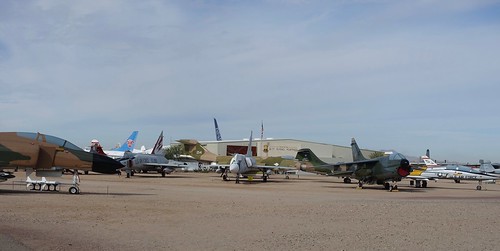
outside tram ride
Most visitors will prefer the flexibility to wander in and out of the buildings, read the signage, and question the experts that linger near popular exhibits. As someone always on the lookout for women’s history, I was intrigued by the small display of nose art and insignia that came from real aircraft. Another unexpected exhibit that is not listed in the brochure was “Women in Flight: Highlights in History”. Colorful display panels along with pictures and artifacts chronicle women’s role in aviation.

Women in Flight exhibit
I was touched when I read the short bio of Captain Amy Lynn Svoboda, one of the first female fighter pilots, who lost her life when she crashed her A-10 Thunderbolt fighter in southwest Arizona.
If time allows, reserve a spot in advance (10-day advance notice required for security reasons) for the 1½-hour bus tour of the 2,600-acre boneyard tour (also known as the Aerospace Maintenance and Regeneration Group bus tour). The museum is the tour operator for this unique excursion on the grounds of the Davis-Monthan Air Force Base.

Bell P-39N Airacobra, an Early WWII Fighter
Mission San Xavier del Bac
Between 1687 and 1711, Jesuit missionary Father Eusebio Francisco Kino traveled throughout the southwestern regions of the United States and the northern part of Mexico. He was a talented mapmaker who added considerable knowledge to the geography of this area. Father Kino established this mission, as well as many others in Pimeria Alta (Land of the Upper Pimas). The site was designated as the northernmost outpost of New Spain.The indigenous people had lived in this area for thousands of years. The Spanish missions were designed to pacify the natives while simultaneously introducing the people to the Catholic faith.
The existing structure dates back to about a century later. A team of artisans and a group of local people worked for fourteen years to construct the building. The funding ran out before the artisans could finish their assigned tasks. The local people completed the job. It should be noted that the tour guide emphatically stated that the indigenous people were not treated like slaves and were compensated for their efforts.
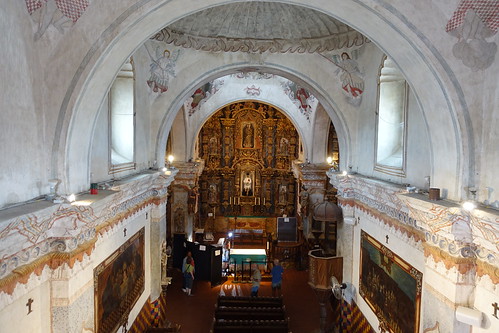
Inside the Mission
Even though there were decades when the building was abandoned, the people continued to protect their house of worship. In the 1960s, Mission San Xavier became a National Historic Landmark. Today, the Tohono O’odham people still use the only intact mission in Arizona while proudly flying their flag overhead.
Since the 1970s, more than $11 million dollars has been spent to repair and protect the adobe brick building and its ornate interior. An extraordinary effort is being made to utilize the original materials to preserve the integrity of the building. The skilled craftsmen, some of whom are 5th generation descendants of the indigenous people, are using the same methods that were used during the original construction in the latter part of the 18th century.
Tim Lewis and Matilde Rubio, a husband and wife team, are meticulously working to restore the interior. While chatting with Tim, he pointed to a small section of the wooden railing that took about four months to fix. They preserve wooden pieces by first removing layers of old paint. Next, rotting sections are identified and an epoxy resin compound is injected into the holes. Finally, efforts are made to match the original color to complete the process.
Prior to being offered this restoration job, Tim worked as a construction worker. Tim’s dad shared with him an advertisement for restorative worker positions in the village newsletter. Tim reluctantly applied for the job. More than 20 other men were applying for the four positions. His anxiety increased during his interview with the Guggenheim Museum officials.
Tim’s lack of schooling and limited on the job training didn’t prevent him from being offered the position. After accepting the job, Tim was sent to Europe to learn conservation techniques. While being trained, he met Matilde. She eventually joined him in Arizona. Together, they work side-by-side near the altar. Like the earlier settlers who took pride in building the mission, Tim looks forward to going to work every Monday, so that he can restore his house of worship.
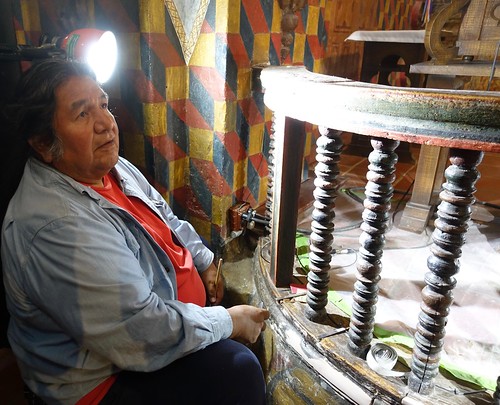
Tim Lewis at Mission San Xavier
Hotel Congress
Hotels that have unique histories can be a gold mine for learning more about a destination. Some of the best domestic places are listed on the Historic Hotels of America website. With almost 300 hotels to choose from, it’s possible to find a unique location that’s part of an historic narrative in almost every state.
The Hotel Congress has the distinction of being Arizona’s longest continuously operated hotel. Old school pay phone booths, a switchboard counsel, and vintage guest rooms with iron bedpost beds decorated with 1930 style telephones, reflect an earlier era.
Every January, the hotel reenacts the capture of John Dillinger and his gang. History buffs interested in Dillinger can read through the posted stories in the lobby. Other visitors may be drawn to some of the guestrooms that are linked to notorious ghost stories. If reservations are not available for any of the 40 rooms, I suggest eating an award-winning breakfast in the Cup Café or listening to music in the nightclub.
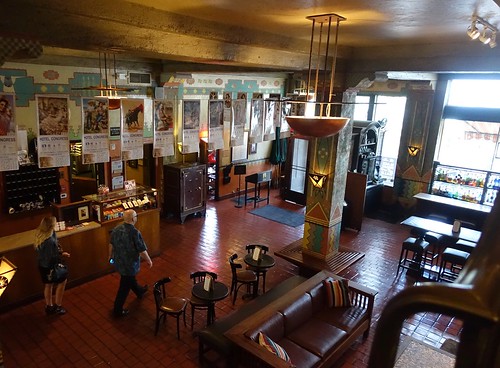
Arizona Hotel Congress Lobby
Franklin Auto Museum
A GPS mapping system will definitely come in handy when you’re looking for the dirt road leading to this privately owned museum. Cars, cars, and more cars are squeezed into an adobe home. It’s a luxury car lover’s dream come true.

1933 Olympic Convertible Coupe, Franklin Auto Museum
Tom Hubbard grew up riding in Franklin automobiles in the 1920s and 1930s and then started his personal collection in the 1950s. Part of his joy came from restoring the extinct cars that he admired. In the mid 1960s, the Franklin Service Company was formed to preserve Franklin automobiles. Prior to Tom’s death in 1993, he established a foundation to display his collection that included almost two-dozen cars dating from 1908 to 1934.
The small size of this collection doesn’t take away from the benefits of visiting the museum. There’s plenty to learn from a short visit. In 1901, Herbert H. Franklin established the H. H. Franklin Automobile Company as a subsidiary of his original company. With his motto, “it can be done”, Herbert utilized John Wilkinson’s engineering expertise to design a gasoline-powered motorcar that used a direct air-cooling engine. Signs, original posters, old newspaper clippings, and photographs provide tidbits of information that explain the various design features and the improvements that were made to the shiny displayed vehicles. Herbert authored the advertising posters hanging on the walls.
In 1916, an assembly line was used to keep up with the demand for the Franklin automobiles. Other than the lower priced Model T Ford, this was the first time that a luxury brand was produced in such a fashion. Like other brands that catered to the wealthy, the manufacturing of Franklin automobiles was severely impacted by the Great Depression. Herbert retired when he was forced to close his business during the height of the Depression.

1926 Sport Touring Auto, Franklin Auto Museum
Arizona Sonora Desert Museum
This is listed on many sites as Tucson’s top attraction and is sometimes included on lists for exemplary American museums. Since it would have taken approximately an hour to reach this site from my hotel, it wasn’t possible to visit during the daytime. I did attend a special dinner that provided a glimpse of the 98-acres that includes a zoo, botanical garden, art gallery, natural history museum, and aquarium. While I rarely recommend places that I haven’t fully explored, I feel confident in suggesting this museum for people who want a better understanding of the Sonoran Desert ecosystems.
Traveling is one of the best ways to learn about the world. Experiencing an unknown place is just one part of the journey. Finding threads of past events is another. Whenever possible, I look for signage, places with historical designations, or check out formal museums. While my primary intent wasn’t historically based, Tucson’s history did come alive when I visited the Pima Air and Space Museum, Mission San Xavier, the Hotel Congress, and Franklin Automobile Museum.
Sandy Bornstein’s visit to Tucson was sponsored by Visit Tucson.
Sandy Bornstein has visited more than 40 countries and lived as an international teacher in Bangalore, India. Sandy’s award-winning book, May This Be the Best Year of Your Life, is a resource for people contemplating an expat lifestyle and living outside their comfort zone. Sandy writes about historical sites, Jewish culture and history, family intergenerational, and active midlife adventures highlighting land and water experiences. You can follow her on Facebook and Instagram.
All photos courtesy and copyright Sandy Bornstein, except for word photo, courtesy creative commons and adapted by Wandering Educators
